|
Artist Interview With Mary Agnes Rodriguez by Victor Zarazua
I heard of this Artist, Mary Agnes Rodriguez, who had been creating incredible murals and mosaic pieces around the West Side. Then a few years ago I was able to meet this passionate artist. Mary set some time aside for a quick interview with us. Enjoy! Hey, Mary, first & foremost thank you for taking the time to do this and I hope you are doing well and I know you are keeping busy. Some artists should look at how you are able to stay focused on creating during this crisis. So, how is life now during this coronavirus lock-down? Life has changed. We are witnessing history through a novel #Coronavirus pandemic #Global How long have you been an artist now, and what motivated you to become a full-time artist? I have been for many years, about 48 years. At a young age, I remember I doodled a lot. But in my later years, I became drawn more to it. It's kind of a struggle to get hired at ad companies if you don't have that much experience but I'm self-motivated. So I created my own job and put my work out there. As an Artist can you explain how the world looks from your perspective? I see beauty in everything whether its a brown dry leaf falling to the ground whereas other people see it as trash. My perspective is through observations. Did you go to any type of Art School or are you pretty much self taught? Yes, I did study at an Art school, also I went to workshops at non-profits. Even tutorials. Trying to keep current with things. One never stops learning. The world is a huge one, we are just a mere tiny spot on this planet. What are your first memories of SACA and how did you get involved ? My first memories of SACA are when I first saw and picked up an issue of El Placazo at my cousin Cathy Garcia’s business in Southdown. Called Alamo Street Garden which now is known as Tito's. So like I said I picked up an issue of the community newspaper. I found it interesting and more so there was a masthead contest. So I submitted 4 designs to San Anto Cultural Arts. And they selected one of the designs. But I never did go to check out San Anto Cultural Arts. But kept submitting artwork to be published. It wasn’t until my cousin closed her business in '99. I received a letter inviting me in Jan to attend a community mural meeting. That is how I became involved in SACA. How important is public art to you? Our art has power. Art can heal. Art can save lives and can bring us together even while we are apart. It helps us through the storm. Public art can empower and build our communities. To bring awareness, prevention, protection as well as beauty, history, cultural, traditions and keeping it alive. By the people. It's like a museum and it's free to the public. It's important to have local community artists because they know their city and their community. What other Non-Profits do you work with? I've worked with San Anto Cultural Arts, the National Association Latino Arts and Cultural, Guadalupe Cultural Arts Center, Esperanza Peace and Justice Center, MujerArtes Clay Studio de Esperanza, and the Alamo City Community Marching Band/Concert. Are you planning on having a solo show after all this is over? Hopefully, yes, God willing. Meantime I can produce a body of work while quarantined. Do you have any book recommendations or documentaries you would like to share? Before the quarantine. A friend mentioned to me a book called Red and Black Ink. Don't remember the author. But she said it was a good book as a reference. It's a book on the codexes. Which I find very interesting. And use some glyphs and symbols etc. Keeping culture alive by using them. What other hobbies do you have? I enjoy being out in the yard with nature. Bird watching and feeding. Practicing my clarinet. What hidden gems can you tell us about in San Antonio? I think it's awesome to have a theater right in the middle of the neighborhood. And to know who has performed there throughout the years and present. They need our support and attend their events whenever possible.Or by being a monthly donor. Because when something happens, the first thing they do is cut the Arts. Which in my opinion should be on top in the list. The artists, performers, spoken word, dance, make the city with their services. And also to collaborate with other non-profit orgs. To build stronger communities. What has been your favorite project you have been able to work on at SACA? I enjoyed working on both the community newspaper and murals and when they had video workshops. Do you have any stories about Manny Castillo, co-founder of SACA, you would like to share? I remember my first mural project and we were doing a presentation. Manny was introducing me saying a little bit about how I would submit artwork to the newspaper but never went to SACA. Do you have any advice for young artist’s who are thinking about becoming a full-time Artist? It's not easy. You have your ups and downs. You get criticized. But don't let that discourage you. If you feel really strong about it, do it! Are you self-motivated? Determined. Passionate. Be involved in your community. Put your work out. Study what other seasoned artists are doing, not copying but creating something that fits you and your art. . Go to workshops, Art school, tutorials. Enter in contests, volunteer in organizations that might be interested in your work. Be original! Thank you so much, Mary!
2 Comments
When I heard about my university's vague plans for post-spring break given Covid-19, they already let us leave and over half of us returned home. Just before spring break ended, the seventh email came, telling us not to return to housing and threatened students who wanted to retrieve their belongings with disciplinary action. So, I sat there wondering how I would finish almost half the semester with none of my art supplies and teetering on the edge of my almost full-ride scholarship’s grade requirement. My works in progress hung on the wall of a studio that was shutting in 24 hours and I could not physically retrieve anything.
Many of my peers brought home their small-scale pieces by plane or were local, but my pieces were around 7 foot large, almost no way to ship that to my home in Texas, unless crated for hundreds of dollars-- each. So, I made a rash decision to finish what I started the best way I could. I just couldn’t take the uncertainty of losing a year’s worth of artwork my junior year when I need to be applying to almost everything. My art supplies made it to Texas after what may or may not have been a 4-day road trip. Thankfully, as a double major and introvert at USC, quarantine is like my regular lifestyle. Apart from spending all my time in the studio, I mostly stayed home, researching, painting, and scribbling away. I do the same here in San Antonio unless I’m called on for projects at San Anto. This past year, I’d been working on a body of work that paid homage to my cultural background, their folklore/mythology, and ecology. I paint large-scale portrayals of them, tying together narrative, ritual, and social-justice issues into a portrait. I often use these deities metaphorically to convey the waning state of another subject in the artwork such as a process, tradition, or even species in the environment. One of my older pieces that I revisited in quarantine was a portrait of Guatuba (Figure 4), a Taino/Puerto Rican deity of the rain, wind and lightning in front of a storm. One that is closer to the theme of endangered practices is for instance, Figure 3, a draft for a larger series that is depicting my memory of learning the processing of the cacao bean with my family in Puerto Rico. Manufacturing has made this style of hands-on processing less common. The second series in process takes a similar approach, thinking about agave and pulque (an Aztec alcohol) processing through the lens of its soon to be dutyless deity, Mayahuel (Figure 1 and 2), if traditional pulque processing ceases. The other deity (Figure 1) is Piltzintecuhtli, the god of hallucinogenic plants, visions and healing. He again is depicted in a forlorn light, since hallucinogenic plants tend to be illegal to grow in places and he now has little to no responsibility, overseeing or healing with outlawed substances. |
in their own wordsWe wanted to hear what artists are working on during this COVID-19 crisis and how it has had an effect on their work and personal lives. We will upload interviews and photos throughout this crisis and beyond. Archives
August 2020
Categories |

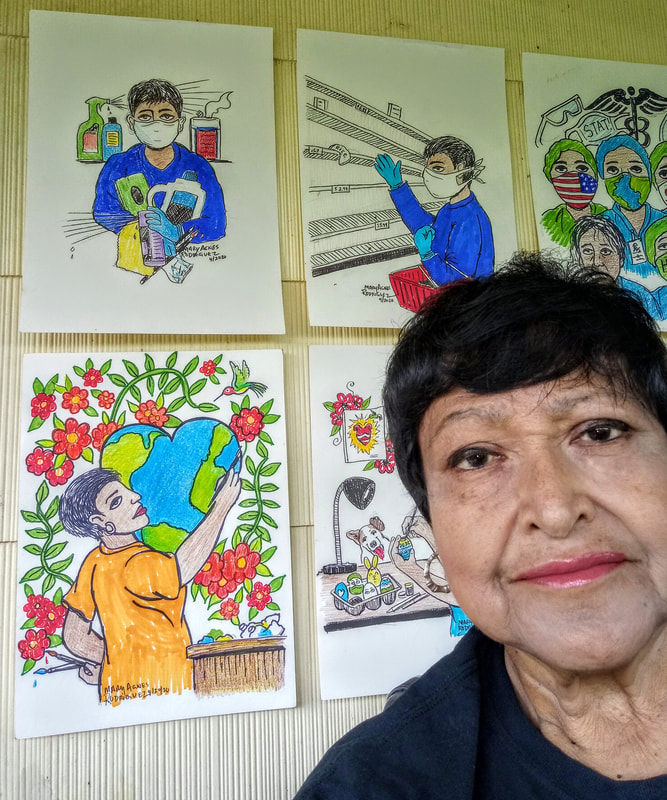
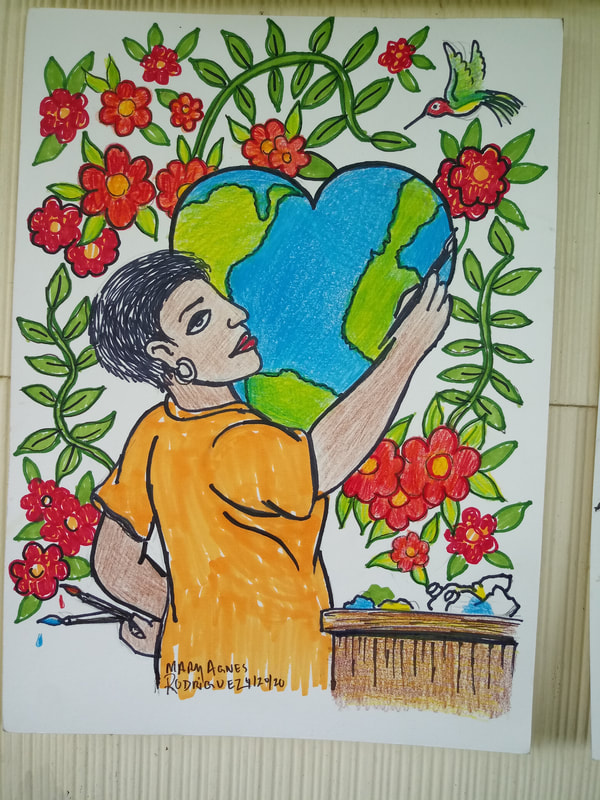
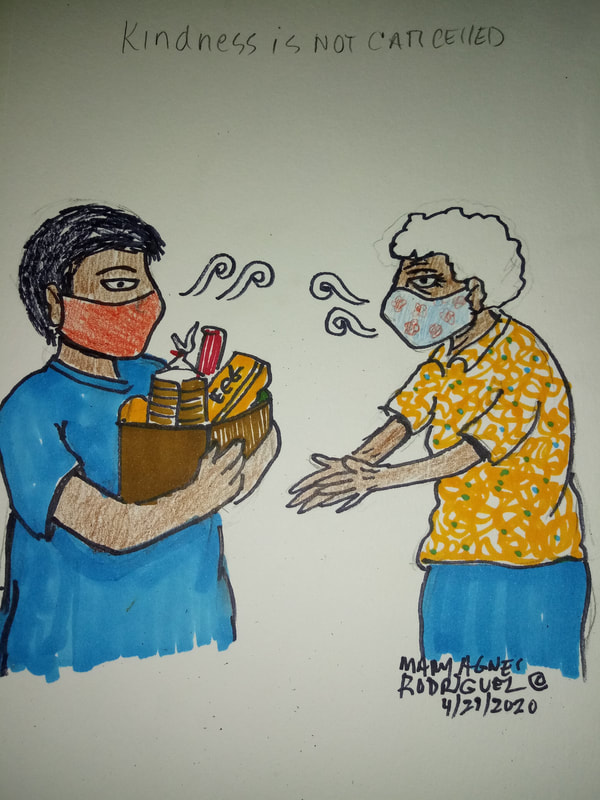
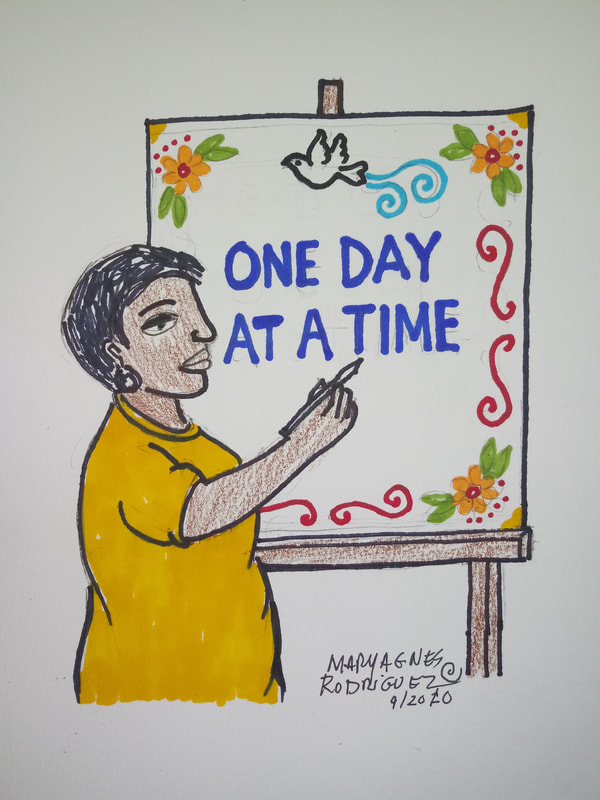
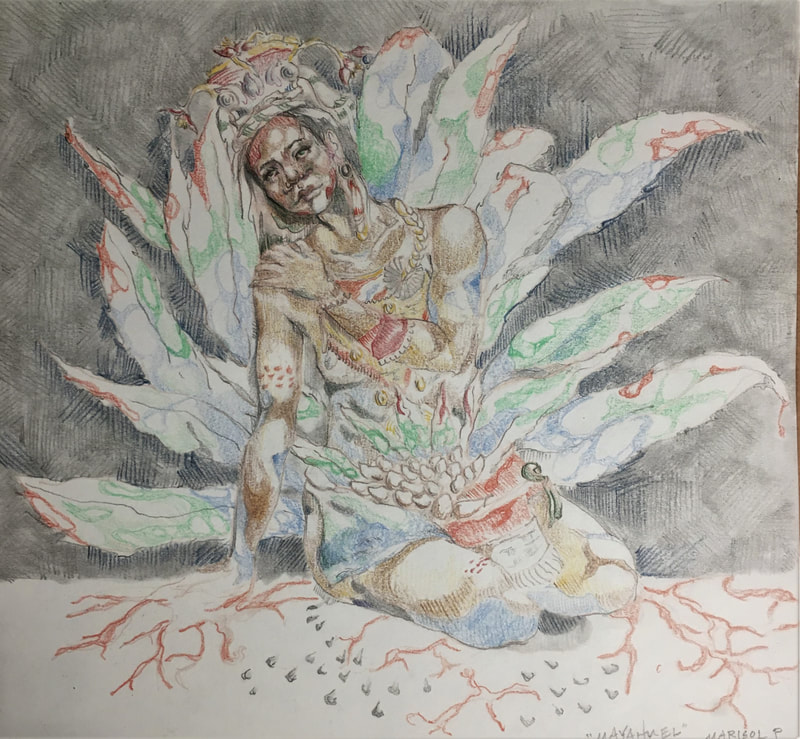
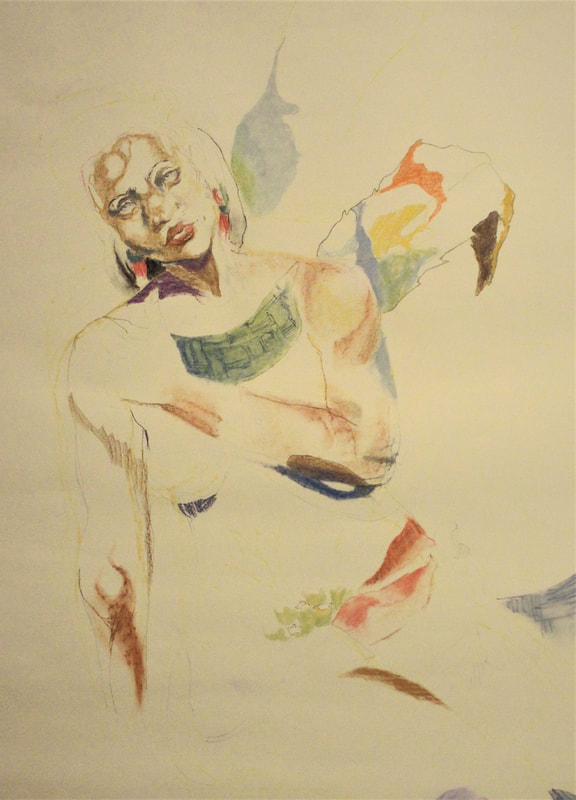
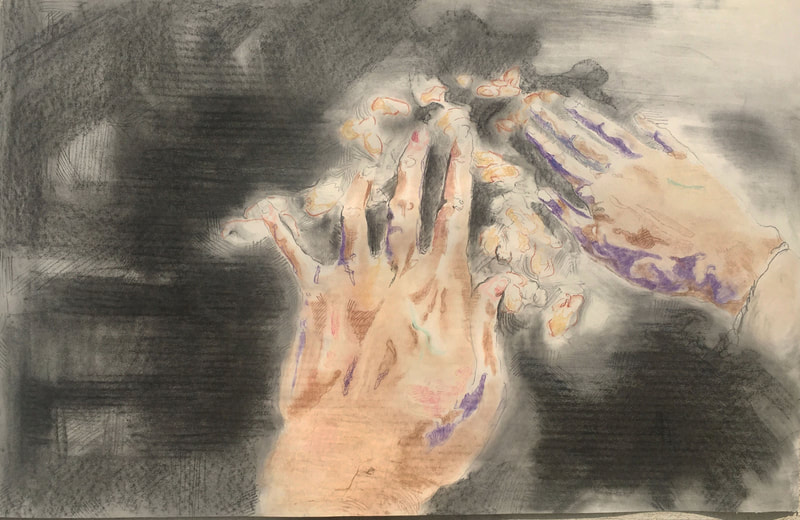
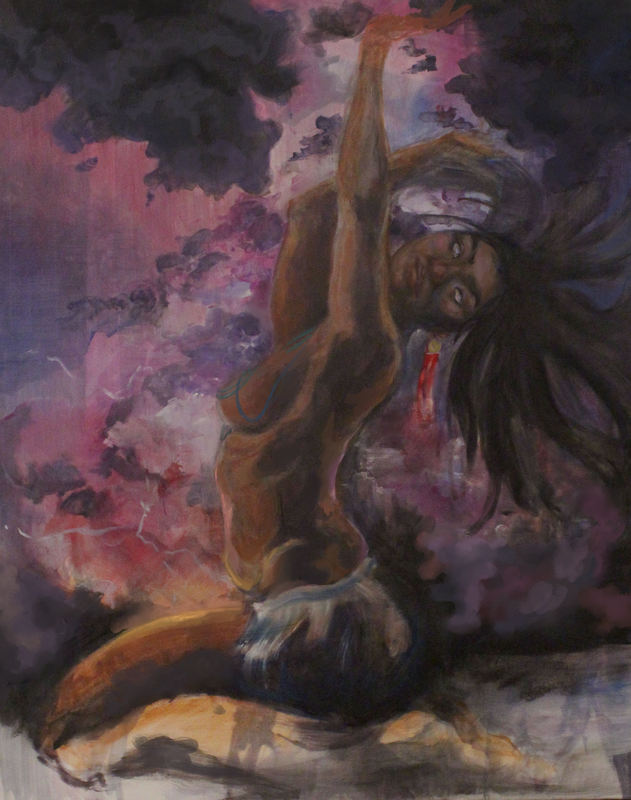
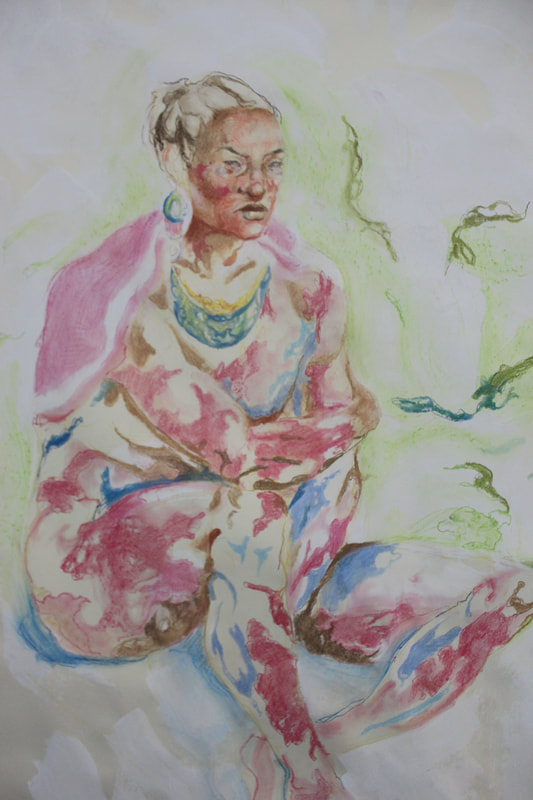
 RSS Feed
RSS Feed